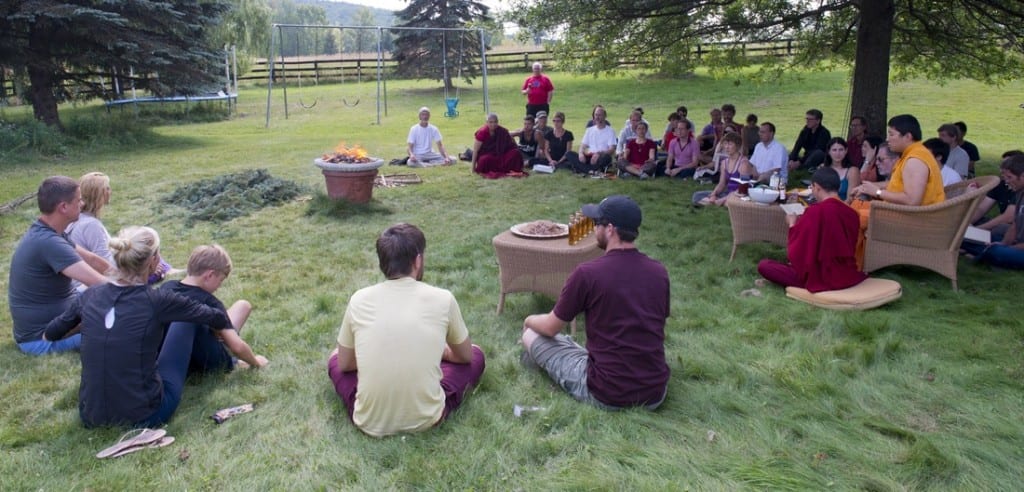Sang pūjā is a profound Vajrayāna offering practice. The word Sang in Tibetan has the meaning of remove, take away; purified, cleared, cleansed, and awakened.
Purification and Offering
Sang pūjā aids practitioners as a purification practice. As we perform this ritual, we focus on removing the impurities in the mindstream of the practitioners and all sentient beings. At the same time, we practice generosity by offering to all the ‘guests’ (see below). The physical ritual involves the burning of different woods and incense. We mix these together with many other substances such as ground gemstones and brocades that are described in the practice texts.
Practitioners invoke the ‘Four Guests’. First, we begin with the guests of veneration: the Three Jewels (Buddha, Dharma, and Sangha) and the awakened manifestations of the Three Roots (Lama, Yidam, and Dakini). Next, the guests of qualities of the Oathbound and wisdom protectors are invited.
Then we invite the guests of compassion, the beings of the six realms. And lastly, we summon the guests with whom we have a connection of karmic debt. We should visualize that the entire sky above us fills with all these invited guests, seated on cloud banks.
Practitioners then visualize that from the fragrant smoke appear limitless offerings of every desirable object that pervade space. These objects can be anything that uniquely satisfies and cleanses the connection to each of these types of guests.
Accumulation of Merit and Wisdom
This practice has great power to perfect the accumulation of merit and wisdom. Thus, it represents much more than a simple offering of incense or smoke. Guru Rinpoche himself taught sang offering in the treasure teachings. On the occasion of the new year, the sangha performs sang in an extensive and colorful two-hour ceremony at Ka-Nying Shedrub Ling monastery. That offering is made to ensure auspiciousness for the coming year.
Additional Resources
Kyabgön Phakchok Rinpoche regularly reminds his students of the benefits of doing the sang pūjā as often as possible. We can do a short version of this practice on daily basis using the Concise Sang Practice (available from Lhasey Lotsawa). If we can’t offer sang daily, we can do it on special occasions, or any time when we begin a new project.
It is often difficult for practitioners to obtain the wide variety of materials needed for the practice. Therefore Akara, under the direction of Tsikey Chokling Rinpoche and Kyabgön Phakchok Rinpoche sourced and developed sang offering cups that are in accord with the text instructions. This allows us to make the correct offerings at home in a very convenient manner. The Jewels of Auspiciousness is a sang offering incense combining all 108 ingredients as specified in the texts. We can offer these in the Vessel of Auspiciousness, a copper vessel for sang offering.
Online Course
Samye also has an online practice support program available here. The course contains detailed explanations of the meaning and key points of practice. The program offers video and audio materials to guide you through the Concise Sang Offering practice. Additionally, we provide context and commentary to explain the meaning and principles behind the practice. Finally, the programs include detailed information on the sang offering substances.










Responses